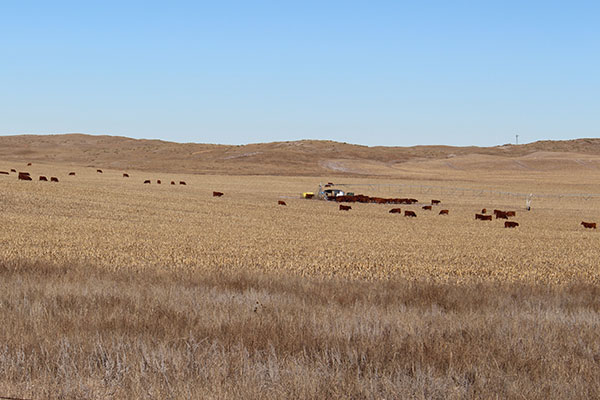
Diversified crop-livestock systems are more productive, sustainable, and economically competitive with traditional cropping systems. They provide for a more climate-resilient and productive agricultural systems for Nebraska and the western Corn Belt.
Bringing grasslands into crop production has increased concerns of exposing erodible land to cultivation and reducing the sustainability of our food production system. Healthy soil, clean water, and productive crop and grasslands are essential to maintaining quality of life.

Benefits
Incorporating livestock production into a cropping system offers additional opportunities to recover establishment and termination costs associated with cover crop management.
Additional benefits associated with integrating livestock into cropping systems include:
- Reduced risk of raising a single product
- Increased water infiltration and resistance to soil erosion
- Increased soil organic C
- Reduced fertilizer use from nutrient cycling

Cattle impacts on crop land
Grazing croplands can have positive effects for increasing soil microbial biomass and organic matter through the addition of manure. There are concerns that cattle grazing crop residues on cropland have negative effect on crop yield potential the following growing season. Generally, cattle grazing on cropland has no effect on subsequent crop yield.


